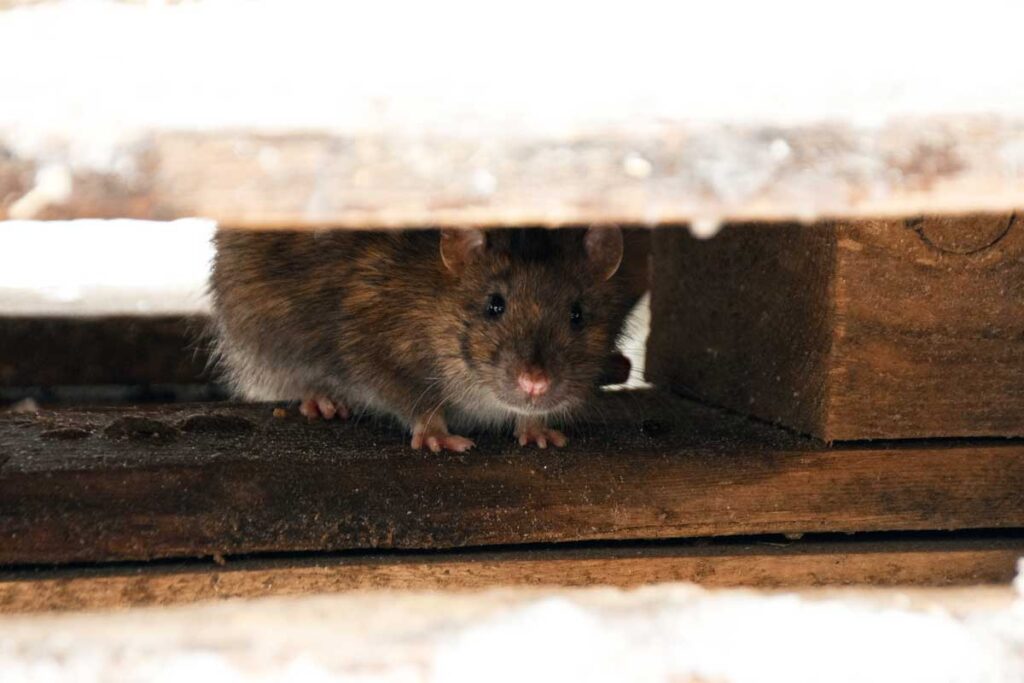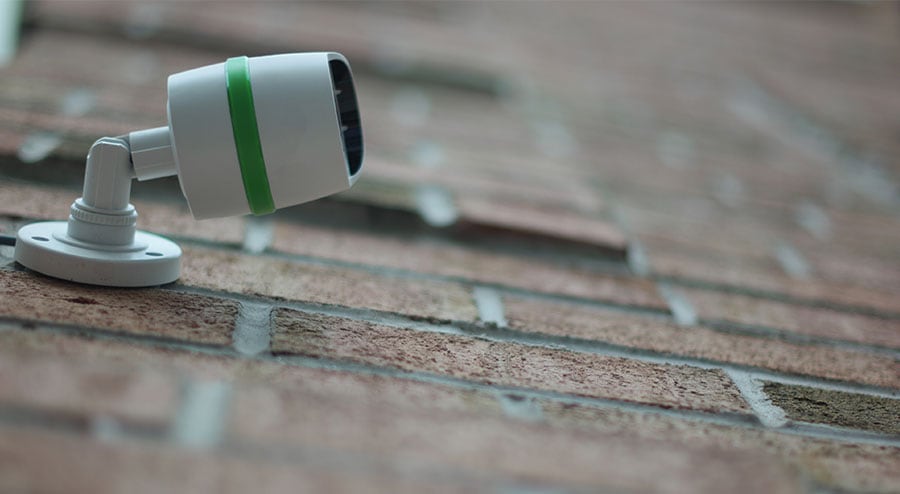Dealing with a mice infestation in the walls can be a challenging and frustrating problem for homeowners. Not only can these pests cause damage to property, but they can also pose health risks. It is important to take prompt and effective action to eliminate mice from the walls. This requires a combination of proactive measures, strategic removal techniques, and proper preventive practices. By understanding the steps involved in getting rid of mice in walls and implementing the right strategies, homeowners can regain control over their living spaces and ensure a safe and rodent-free environment.

Table of Contents
- Identifying A Mice Infestation In Your Walls
- Understanding Why Mice Invade Your Walls
- Potential Hazards Of A Mice Infestation
- Home Remedies And Strategies For Dealing With Mice In The Walls
- Preventive Measures And Routine Checks For Mice Infestation
- Handling Post-Infestation Clean-Up
- Hiring A Professional Pest Control Service
- Evaluating The Process Of Mice Removal
- Conclusion
Identifying A Mice Infestation In Your Walls
Being aware of the first signs, knowing how to detect their presence, and recognizing the common noises they make, you can effectively identify a mouse infestation in your walls. It’s important to address the problem promptly to prevent further damage and potential health risks associated with mice infestations.
What Are The First Signs Of Mice In The Walls?
When dealing with a potential mice infestation in your walls, there are several telltale signs to look out for. One of the first signs is the presence of small droppings. Mouse droppings are typically dark-colored, resembling small pellets, and can often be found along baseboards, in corners, or near food sources. Another common sign is gnaw marks. Mice have a strong need to chew, and they may leave behind chewed wires, wood, or other materials in and around the walls. You may notice a distinct musky odor in the area where the mice are present. Their urine causes this odor and can be quite pungent. Keep an eye out for these early signs, as they can help you detect a mouse infestation in your walls before it worsens.
How Do You Know If You Have Mice In Your Walls?
If you suspect mice in your walls, there are a few ways to confirm their presence. One method is to carefully listen for any scratching or scurrying noises coming from within the walls. Mice are active at night, so you may hear these sounds during the quiet hours. Another way to confirm their presence is by conducting a visual inspection. Look for any small holes or entry points in your walls, as mice can squeeze through tiny openings. You may also spot shredded materials, such as insulation or paper, which mice use to build their nests. Consider using a flashlight and shining it along the baseboards or in dark corners to catch a glimpse of mice as they move around. These methods can help you gather more evidence to confirm whether or not you have mice residing in your walls.
What Are The Common Noises Made By Mice In The Walls?
When mice take up residence in the walls, they can generate various noises that can be heard. These noises are often more noticeable during the night when the house is quiet. Scratching or scampering sounds are quite common, as mice are agile climbers and may be exploring or navigating their way through the walls. You may also hear squeaking or chirping sounds, which can be vocalizations made by the mice. These noises can be amplified within the walls, making them more audible to residents. If you consistently hear these types of sounds coming from the walls, it’s a strong indication that you have a mice infestation and should take appropriate measures to address the issue.
Understanding Why Mice Invade Your Walls
What Attracts Mice To The Inside Of Walls?
Mice are attracted to the inside of walls for various reasons, and understanding these factors can help you identify potential vulnerabilities in your home. One primary factor is the availability of food sources. Mice are opportunistic feeders and will seek out easily accessible food. If your home has open food containers, improperly stored food, or crumbs left behind, it can be highly appealing to mice. They can detect even small amounts of food and will venture into the walls in search of nourishment.
Another factor that attracts mice to the inside of walls is shelter. Mice seek warm and secure places to build their nests, and the voids within walls provide an ideal hiding spot. The walls offer protection from predators, harsh weather conditions, and human disturbances. The presence of insulation materials or other soft materials within the walls further enhances their suitability as nesting sites.
Mice are drawn to areas with readily available water sources. Leaky pipes, condensation, or even water droplets can provide enough moisture for mice to survive. If there are plumbing issues or areas of excess moisture in your home, it can contribute to the attractiveness of your walls as a potential habitat for mice.
Are Certain Types Of Houses Or Buildings More Susceptible To Mice In The Walls?
While mice can infiltrate any type of house or building, some structures may be more susceptible to mice infestations in the walls. Older buildings with deteriorating exteriors or gaps in the foundation are more prone to mice entry. Mice can squeeze through tiny openings as small as a dime, so even minor cracks or gaps can serve as access points.
Houses or buildings located near open fields, wooded areas, or bodies of water are more likely to experience mice infestations. These environments provide natural habitats for mice, and they may venture into nearby structures in search of food and shelter.
The presence of clutter or debris around the exterior of a building can also increase the likelihood of mice in the walls. Piles of wood, overgrown vegetation, or unattended garbage can attract mice and provide convenient hiding places near the structure.
Potential Hazards Of A Mice Infestation
What Damages Can Mice Cause Inside Walls?
Mice infestations within walls can lead to various damages, posing potential hazards to your home. One common issue is gnawing and chewing. Mice have a natural instinct to chew on objects to keep their teeth from growing too long. Unfortunately, this can result in significant damage to the walls themselves. Mice may chew on electrical wires, insulation materials, and even wooden structures within the walls. This poses a fire hazard due to exposed wires and can compromise the structural integrity of the walls over time.
Mice can also create entry points or enlarge existing openings in the walls, allowing for easy access to other parts of your home. This can lead to further infestations in different areas and increase the potential for damage throughout the house.
How Dangerous Are Mice Infestations In Walls For Human Health?
Mice infestations in walls can pose risks to human health. Mice carry various pathogens, bacteria, and parasites that can contaminate their surroundings. Their urine, droppings, and saliva can contain harmful microorganisms, including Salmonella, Hantavirus, and Leptospira.
When these contaminants become airborne, they can be inhaled by humans, potentially leading to respiratory issues and diseases. People with allergies or asthma may experience aggravated symptoms in the presence of mice allergens. Additionally, mice can transmit diseases indirectly through fleas, ticks, and mites that infest them.
Can Mice In The Walls Pose A Threat To The Structural Integrity Of The House?
Mice infestations in walls can indeed pose a threat to the structural integrity of the house. As mentioned earlier, their constant gnawing and chewing behavior can damage the walls, insulation, electrical wiring, and other components within. This can weaken the structural integrity of the walls and potentially compromise the stability of the entire structure. Mice can cause damage to the insulation materials within the walls, reducing their effectiveness. This can result in heat loss, decreased energy efficiency, and increased utility costs.
Home Remedies And Strategies For Dealing With Mice In The Walls
Are There Any Home Remedies To Get Rid Of Mice In The Walls?
While professional assistance is often recommended for the effective removal of mice in the walls, there are some home remedies that you can try. One common approach is to use natural deterrents such as peppermint oil or mothballs. The strong scent of peppermint oil is known to repel mice, so you can soak cotton balls in the oil and place them near wall openings or potential entry points. Mothballs can also deter mice due to their strong odor, but it’s important to use them with caution as they contain chemicals that may be harmful to humans and pets.
How Effective Are Mouse Traps In Dealing With Mice In Walls?
Mouse traps can be effective in capturing mice in walls. Traditional snap traps are commonly used and can be placed near wall openings or along known mouse pathways. However, their effectiveness may vary depending on the size and behavior of the mice. It’s important to set the traps properly, ensuring they are securely positioned and baited with attractive food sources.
What Type Of Mouse Trap Is Best For Capturing Mice In Walls?
For capturing mice in walls, snap traps with a narrow profile are often recommended. These traps can fit in tight spaces, making them suitable for placement along walls or in confined areas. There are also specialized traps designed specifically for wall applications, such as flat glue traps or electronic traps that emit a high-voltage shock upon contact.
What Are The Best Baits To Use In Mouse Traps For Mice In The Walls?
Effective baits for mouse traps include food items that mice are attracted to, such as peanut butter, chocolate, bacon, or small pieces of cheese. These strong-smelling and flavorful baits can entice mice to approach the traps and trigger them. Experimenting with different baits may be necessary as mice preferences can vary.
How To Use Poison Safely To Get Rid Of Mice In The Walls?
Using poison to eliminate mice in the walls should be approached with caution. It’s important to follow the instructions provided by the manufacturer and use appropriate safety measures. Poison baits should be placed in tamper-resistant bait stations to prevent accidental ingestion by children or pets. It’s crucial to keep in mind that poisoned mice may die within the walls, leading to potential odor issues and the need for professional assistance to locate and remove the carcasses.
What Are The Risks Of Using Poison To Eliminate Mice In Walls?
Using poison baits carries some risks, primarily related to the potential harm it may cause to non-target animals or unintended exposure to children or pets. If mice consume the poison and die within the walls, decomposition can create unpleasant odors and attract other pests. It’s important to weigh the risks and benefits and consider alternative methods if these concerns are significant.
Can Ultrasonic Pest Repellers Effectively Eliminate Mice From The Walls?
Ultrasonic pest repellers claim to emit high-frequency sounds that are unpleasant to mice, thus driving them away. However, the effectiveness of these devices in eliminating mice from the walls is a topic of debate. While some people report success with ultrasonic repellers, others question their efficiency. Mice can adapt to sound-based repellents over time, reducing their effectiveness.
What Are The Pros And Cons Of Using Live Traps For Mice In The Walls?
Live traps can be a humane option for capturing mice, allowing for their release outside. They typically consist of a container with a one-way entry mechanism, preventing the mice from escaping once they enter. The advantages of live traps include the ethical treatment of mice and the avoidance of potential odor issues from dead mice inside the walls. However, live trapping requires regularly checking the traps and releasing the captured mice at an appropriate location far from your home. It may also take more time and effort compared to other methods.
Preventive Measures And Routine Checks For Mice Infestation
How To Effectively Seal Gaps And Cracks To Prevent Mice From Entering The Walls?
To prevent mice from entering your walls, sealing any gaps and cracks that serve as potential entry points is important. Start by inspecting the exterior of your home, paying close attention to areas where pipes, wires, or vents enter the building. Use caulk or weather stripping to seal gaps around these entry points. Check for cracks in the foundation and walls, and repair them promptly. Additionally, ensure that doors and windows are properly sealed with weatherstripping or door sweeps. By eliminating these entry points, you can significantly reduce the likelihood of mice entering your walls.
How Often Should I Check The Walls For Signs Of Mice?
Regularly inspecting your walls for signs of mice is crucial in early detection and prompt action. It is recommended to perform thorough checks at least once a month to identify any potential signs of infestation. If you have had previous issues with mice or suspect their presence, more frequent inspections, such as every two weeks, may be warranted.
During these inspections, carefully examine the walls for visible droppings, gnaw marks, or any small holes or openings that could indicate mouse activity. Pay close attention to areas near food sources, utility lines, and corners where mice are likely to travel. By maintaining a regular inspection schedule, you can catch signs of a mice infestation early on and take appropriate measures to address the problem swiftly.
What Are Some Preventative Measures To Stop Mice From Entering The Walls?
To effectively prevent mice from entering your walls, there are several proactive measures you can take. Ensure that your home is kept clean and well-maintained. Regularly clean up food spills and crumbs, as these can attract mice. Properly store food in airtight containers to deny mice easy access. Dispose of trash in sealed containers and maintain good sanitation practices in and around your property.
To further fortify your defenses against mice, seal any openings or cracks in the walls with materials such as steel wool or wire mesh. Focus on areas where utility openings, pipes, or wires enter the building. Install door sweeps on exterior doors to create a barrier against mice. Trim tree branches and vegetation near your home to limit potential access points. Utilize metal or thick plastic trash cans to store garbage outside, as mice can chew through thin plastic bags.
Handling Post-Infestation Clean-Up
Once you have successfully dealt with a mice infestation in your walls, it is crucial to follow proper clean-up procedures to ensure a hygienic and safe environment. By understanding the steps involved in post-infestation clean-up, you can effectively sanitize the area and remove any remnants of the infestation.
How To Clean And Disinfect Areas After Getting Rid Of Mice In The Walls?
After successfully eliminating mice from your walls, it is important to thoroughly clean and disinfect the affected areas to ensure hygiene and prevent the spread of diseases. Start by wearing protective gloves and a mask to minimize contact with potential contaminants. Remove any droppings, nesting materials, or debris using disposable gloves and a damp cloth. Place the materials in a sealed bag and dispose of them properly.
Next, clean the area with a mixture of warm water and a mild detergent. Scrub the walls, floors, and surfaces that were in contact with mice or their waste. Rinse the area with clean water and dry it thoroughly. Once the area is clean, apply a disinfectant spray or solution to kill any remaining bacteria or pathogens. Follow the instructions on the disinfectant product and ensure proper ventilation during the process.
How Do You Remove Dead Mice Smell From The Walls?
The odor of a dead mouse can be unpleasant and persistent. To eliminate the smell, locate the source of the odor by carefully sniffing along the walls or using your sense of smell to identify the strongest area. Once located, you may need to make a small hole in the wall to access the carcass. Use gloves and a plastic bag to carefully remove the dead mouse and dispose of it in a sealed bag.
After removing the carcass, clean the area with a mixture of warm water and vinegar. The vinegar helps neutralize the odor. Scrub the walls and surrounding surfaces with the solution and rinse with clean water. You can also use odor-eliminating products specifically designed for removing dead animal smells. Follow the instructions provided by the manufacturer to effectively eliminate the odor.
Improving ventilation in the area can help dissipate any lingering smell. Open windows, use fans or place odor absorbers like activated charcoal or baking soda near the affected area to help neutralize the odor.
Hiring A Professional Pest Control Service
Is It Necessary To Hire A Professional Pest Control Service For Mice In The Walls?
While handling a mice infestation in the walls can be done through DIY methods, there are instances where hiring a professional pest control service becomes necessary. If the infestation is severe, persistent, or recurring despite your efforts, professionals can provide expertise, advanced techniques, and specialized tools to effectively eliminate the mice from your walls. Additionally, professional services can offer long-term prevention strategies to ensure the problem doesn’t reoccur.
What Methods Do Professional Pest Control Services Use To Get Rid Of Mice In The Walls?
Professional pest control services employ a range of methods to eradicate mice infestations in walls. These may include comprehensive inspections to identify entry points and nesting areas, strategically placed traps or bait stations, and targeted application of rodenticides. Professionals may also employ exclusion techniques to seal off potential entry points and prevent future infestations. The exact methods used will depend on the severity of the infestation, the size of the property, and the specific needs of the situation.
How Much Does It Typically Cost To Remove Mice From The Walls Professionally?
The cost of professional mice removal services can vary depending on several factors, such as the size of the property and the extent of the infestation. On average, professional pest control services for mice in the walls can range from $200 to $500 or more. This cost can increase for larger properties or more severe infestations. It’s important to note that these prices are approximate and can vary depending on the region and the specific service provider. Obtaining quotes from multiple reputable pest control companies and discussing the scope of the infestation can help you get a more accurate estimate for your situation.
Evaluating The Process Of Mice Removal
The duration required to completely eliminate a mouse infestation in the walls can vary depending on several factors, including the size of the infestation, the accessibility of the affected areas, and the methods used for removal. In general, it can take anywhere from a few days to several weeks to effectively eradicate the infestation and ensure that all mice are eliminated.
The process usually begins with a thorough inspection to identify the extent of the infestation and locate nesting areas and entry points within the walls. Once the areas of activity are determined, pest control professionals will employ various methods such as traps, bait stations, and rodenticides to capture or exterminate the mice. They may also use exclusion techniques to seal off entry points to prevent future infestations.
The length of time required for complete elimination will depend on the number of mice present, their breeding cycle, and their ability to access food and water sources. It is important to note that mice reproduce rapidly, and a single female can have multiple litters in a year. Therefore, it may take longer to eliminate an infestation if it involves a large population of mice or if the breeding cycle is not disrupted.
Conclusion
Dealing with a mice infestation in the walls requires a systematic and comprehensive Identifying the signs of infestation, understanding the reasons for their presence, and implementing effective removal strategies are essential steps. Home remedies, such as sealing gaps and using traps or poison, can be effective for smaller infestations, but professional pest control services may be necessary for larger or persistent problems. Regular monitoring, preventive measures, and proper post-infestation clean-up are crucial to ensure long-term success in getting rid of mice in the walls. By combining these strategies and seeking professional assistance when needed, homeowners can create a safe and mouse-free environment within their walls.




